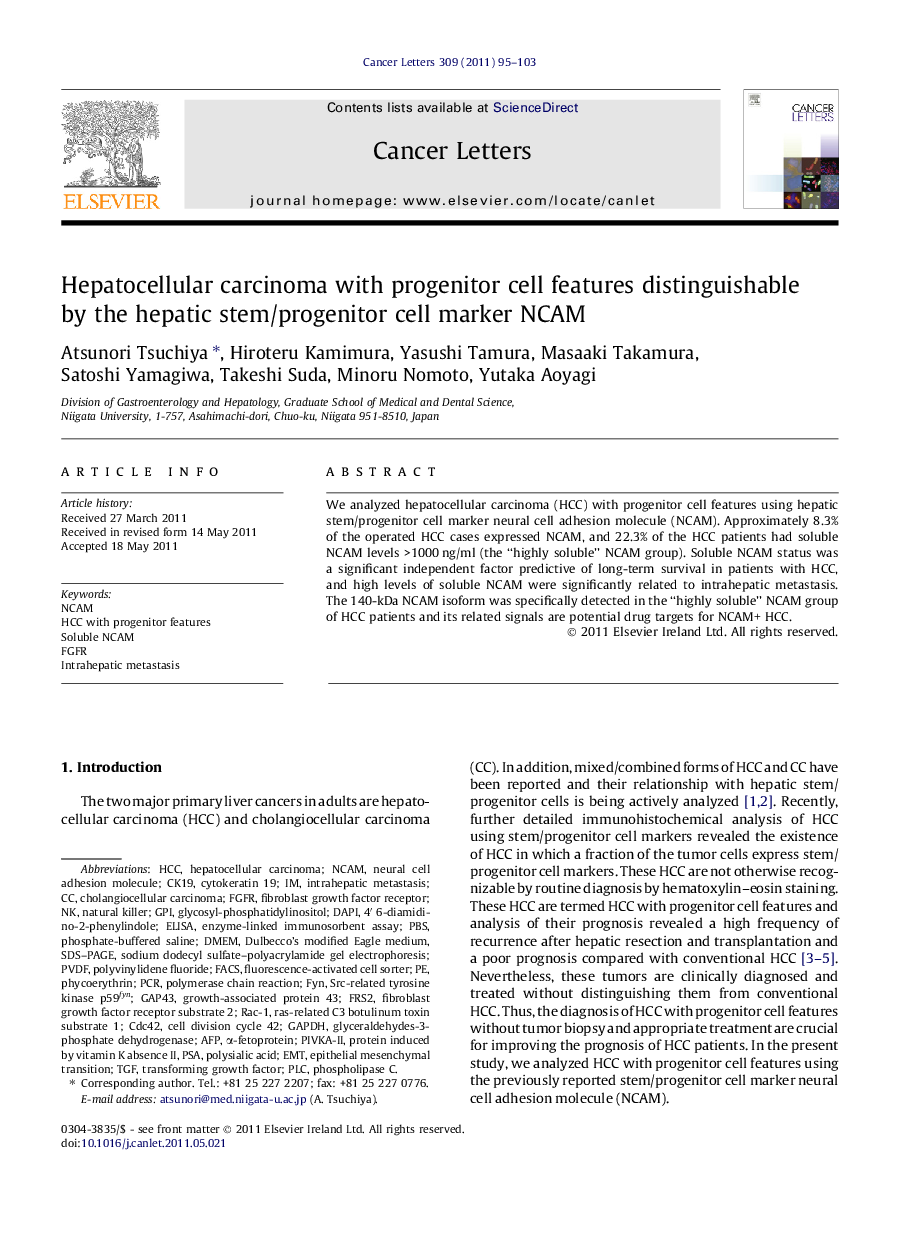| Article ID | Journal | Published Year | Pages | File Type |
|---|---|---|---|---|
| 10900093 | Cancer Letters | 2011 | 9 Pages |
Abstract
We analyzed hepatocellular carcinoma (HCC) with progenitor cell features using hepatic stem/progenitor cell marker neural cell adhesion molecule (NCAM). Approximately 8.3% of the operated HCC cases expressed NCAM, and 22.3% of the HCC patients had soluble NCAM levels >1000 ng/ml (the “highly soluble” NCAM group). Soluble NCAM status was a significant independent factor predictive of long-term survival in patients with HCC, and high levels of soluble NCAM were significantly related to intrahepatic metastasis. The 140-kDa NCAM isoform was specifically detected in the “highly soluble” NCAM group of HCC patients and its related signals are potential drug targets for NCAM+ HCC.
Keywords
PVDFGPiGap43TGFPLCDAPIGAPDHNCAMFGFRCDC42DMEMFACSPBSCK19PIVKA-II4′ 6-diamidino-2-phenylindoleFRS2natural killerHCCα-fetoproteinepithelial mesenchymal transitiontransforming growth factorAFPEnzyme-linked immunosorbent assayELISAEMTRac-1Ras-related C3 botulinum toxin substrate 1cell division cycle 42cytokeratin 19phycoerythrinphospholipase Cfluorescence-activated cell sorterFynintrahepatic metastasisPhosphate-buffered salineneural cell adhesion moleculepolymerase chain reactionPCRgrowth-associated protein 43Polyvinylidene fluorideHepatocellular carcinomacholangiocellular carcinomaglyceraldehydes-3-phosphate dehydrogenaseglycosyl-phosphatidylinositolfibroblast growth factor receptor
Related Topics
Life Sciences
Biochemistry, Genetics and Molecular Biology
Cancer Research
Authors
Atsunori Tsuchiya, Hiroteru Kamimura, Yasushi Tamura, Masaaki Takamura, Satoshi Yamagiwa, Takeshi Suda, Minoru Nomoto, Yutaka Aoyagi,
